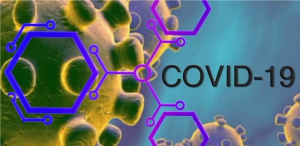Can Repurposed Drugs be the Magic Solution to Treat COVID-19?
A research team led by Dr. David Fajgenbaum at Perelman School of Medicine at the University of Pennsylvania has been working hard to discover new uses for existing drugs. The global pandemic COVID-19 led the team to direct their efforts toward this pandemic. The aim of their work is to provide a comprehensive database for healthcare practitioners to treat COVID-19 patients. The findings of their study were published in Infectious Diseases and Therapy.
Importance of the database

Credit: Perelman School of Medicine at the University of Pennsylvania
Out of 2,706 articles, 155 studies referenced treatments administered to COVID-19 patients. The study combined all the latest statuses of off-label and ongoing trials. In fact, antivirals were found to be the most administered class, and the combination of lopinavir and ritonavir was the most frequently used.
The team created the database going through two main phases. During phase 1, they reviewed over 2,500 papers from different databases. The researchers discovered that 115 repurposed drugs showed promising results in treating COVID-19. Phase 2 is still ongoing and oriented with continuing the work to maintain a regularly updated list of all medications that can be used in COVID-19 patients. In addition, the research team is re-analyzing publicly available COVID-19 single cell transcriptomic data alongside iMCD data to search for novel therapeutics. The database can be accessed here.
Why is drug repurposing important?
Understanding the mechanism of coronavirus relying on existing information on human pharmacology and toxicology will help to implement rapid clinical trials to be approved for treatment. Repurposing existing drugs is a very important approach that has been discussed recently and adopted by Dr. Fajgenbaum’s lab.
This approach has also been discussed in several research papers focusing on the repurposing of drugs based on their mechanism of action (1). The repurposed drugs may come from different origins. Some examples include antidepressant drugs such as fluvoxamine, sertraline, and imipramine (2). In addition, antifungals drugs such as nystatin and itraconazole proved to be positive too (2). However, antivirals were found to be the most effective class.
In conclusion, drug repurposing is a very effective approach. Extracting data from published reports on all drugs used in COVID-19 is a critical step. It is very useful to have an open online source that is easily accessible like the one developed by Dr. Fajgenbaum and his team of researchers and physicians. For a deeper look into the research and the potential benefits of this study, check out this video from Dr. Fajgenbaum.
This blog post was submitted by Nouran Yonis as part of our Summer 2020 blog contest. You can vote for your favorite on our Twitter, Facebook and LinkedIn. The winner will be announced on September 14, 2020.
References
Brimacombe, K. R., Zhao, T., Eastman, R. T., Hu, X., Wang, K., Backus, M., … Shen, M. (2020). An OpenData portal to share COVID-19 drug repurposing data in real time. BioRxiv : The Preprint Server for Biology, 2020.06.04.135046. https://doi.org/10.1101/2020.06.04.135046
Glebov, O. O. (2020). Understanding SARS‐CoV‐2 endocytosis for COVID‐19 drug repurposing. The FEBS Journal, febs.15369. https://doi.org/10.1111/febs.15369
Herxheimer, H. (1949). Antihistamines in bronchial asthma. British Medical Journal, 2(4633), 901–905. https://doi.org/10.1136/bmj.2.4633.901
Khan, Z., Karataş, Y., Ceylan, A. F., & Rahman, H. (2020, June 13). COVID-19 and therapeutic drugs repurposing in hand: The need for collaborative efforts. Pharmacien Hospitalier et Clinicien. https://doi.org/10.1016/j.phclin.2020.06.003
Lin, H. P., Singla, B., Ghoshal, P., Faulkner, J. L., Cherian-Shaw, M., O’Connor, P. M., … Csányi, G. (2018). Identification of novel macropinocytosis inhibitors using a rational screen of Food and Drug Administration-approved drugs. British Journal of Pharmacology, 175(18), 3640–3655. https://doi.org/10.1111/bph.14429
Mucke, H. A. M. (2020). COVID-19 and the Drug Repurposing Tsunami. ASSAY and Drug Development Technologies, 18(5), 211–214. https://doi.org/10.1089/adt.2020.996
Otomo, M., Takahashi, K., Miyoshi, H., Osada, K., Nakashima, H., & Yamaguchi, N. (2008). Some selective serotonin reuptake inhibitors inhibit dynamin I guanosine triphosphatase (GTPase). Biological and Pharmaceutical Bulletin, 31(8), 1489–1495. https://doi.org/10.1248/bpb.31.1489
Pawar, A. Y. (2020). Combating Devastating COVID -19 by Drug Repurposing. International Journal of Antimicrobial Agents, 56(2), 105984. https://doi.org/10.1016/j.ijantimicag.2020.105984
Sharma, R. K., Sehgal, S., Sachdeva, N., Kumar, R., & Gupta, A. (2019). Direct Engagement of TLR9 Ligand with T Helper Cells Leads to Cell Proliferation & Up-regulation of Cytokines. Immunological Investigations, 48(1), 79–95. https://doi.org/10.1080/08820139.2018.1515223
Takahashi, K., Miyoshi, H., Otomo, M., Osada, K., Yamaguchi, N., & Nakashima, H. (2010). Suppression of dynamin GTPase activity by sertraline leads to inhibition of dynamin-dependent endocytosis. Biochemical and Biophysical Research Communications, 391(1), 382–387. https://doi.org/10.1016/j.bbrc.2009.11.067
Ulm, J. W., & Nelson, S. F. (2020). COVID‐19 drug repurposing: Summary statistics on current clinical trials and promising untested candidates. Transboundary and Emerging Diseases, tbed.13710. https://doi.org/10.1111/tbed.13710


